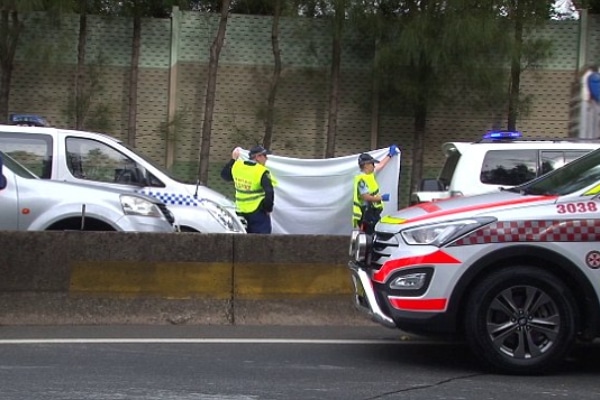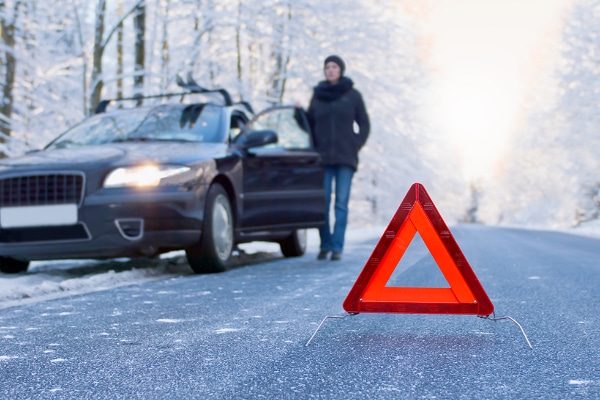A flat tire does not just happen in the city and can strike anyone who may be driving on the highway. The vehicle could be moving at a speed of over 40 or 60 mph when the flat tire may occur without warning.
Most drivers would have heard about safety precautions they should be taking if they ever encounter a flat tire on the highway. However, it is a common practice among most drivers not to remember the best practices they should be following if and when they really have a flat tire on the highway.
A flat tire can happen because of numerous reasons but the ultimate result would remain the same and leave the driver with a problem on his or her hands.
A vehicle being driven at 40 or 60 mph can behave dangerously if the driver does not manage it properly. Improper management of the vehicle can lead to serious accidents which may eventually be blamed on the flat tire. However, some part of the blame must also be accepted by the driver who may have become overwhelmed with the problem and unsure about how it should be managed.
People generally read about flat tires in their garages or in the parking lot where the vehicle is stationary. A moving vehicle is different from a stationary vehicle. When one of the tires of the vehicle goes flat the moving vehicle must be handled carefully and the responsibility of doing so rests with the driver.
Unfortunately even as plenty of information is available of how a flat tire on the highway should be managed there is a lack of practical education because even driving schools do not teach fresh learners how they should be managing the vehicle if they were confronted with a flat tire when driving especially on the highway.
This is perhaps the primary reason why most people are unaware of the best practices they should follow when they have a flat tire on the highway.
In this article, we are providing you some of the best practices which could possibly help you to avoid an uneventful experience if you are ever confronted with this problem. Let us look at how this problem can easily be overcome by following the simple best practices recommended.
Best Practices For Dealing With a Flat Tire
Quick Navi -
Slow down
As a driver, the foremost responsibility lies in slowing down the vehicle to below 30 mph without trying to slam on the brakes. Drivers need to understand slamming the brakes may aggravate the condition and therefore are recommended to remain patient rather than panic and steer the vehicle away from the lane they are driving into a safe location.
Grip the steering wheel
On the first indication of any trouble with the tires, it is recommended that the steering wheel be firmly gripped. This in no way means the driver needs to put his or her body weight on the steering wheel but only needs to have a firm grip to ensure it does not waver at any time.
Avoid slamming the brakes
Slamming the brakes is first on the minds of drivers with a flat tire when driving on the highway. This is a practice which must be avoided by understanding that the vehicle would be rear-ended by the following vehicle. Moreover stopping the vehicle in the middle of a busy lane is unlikely to resolve the issue of the flat tire. Drivers are advised to let the car slow down gradually by removing their foot from the gas pedal.
Changing Lanes
As of this moment, there is no law which states that lanes cannot be changed just because the vehicle has a flat tire. When trying to move the vehicle to a safer location it becomes essential for the driver to change lanes. They simply need to overcome this problem by changing lanes carefully with their signals indicating their intention to do so. Watching the traffic around them is also a good practice to follow.
Avoid stopping in traffic
Rolling the vehicle off the highway into a safe place is a better option than stopping in traffic and risking being rear-ended by other vehicles or even risking a side on collision. This is a practice which should be learned by every driver because these are pure basics.
Moving to safe ground
Drivers must make an attempt to move the vehicle to a traffic free area. The area chosen must also be stable and flat. They should understand there are literally safeguarding their lives by driving a short distance on a flat tire to a traffic free area. They should not be worrying about the flat tire because a vehicle can still be driven with a flat tire as long as sudden movements are avoided.
Turn on emergency flashers.
Drivers are recommended to turn on the emergency flashers in their vehicle even after they move it to a traffic free area. The flashers should remain on to ensure other drivers can see the problem being encountered and realize a problem exists with the vehicle.
 Change the flat tire
Change the flat tire
This task must only be undertaken if the driver is aware of how the tire should be changed and has the proper equipment to do so safely and away from the traffic. Drivers are recommended not to attempt a rush job in conditions which may be unsafe for changing the flat tire. A better option would be to call in the specialists that are capable of changing the flat tire properly.
Hang a white cloth outside the window
Emergency responders are likely to miss the driver with the flat tire if they are not able to identify the vehicle. Therefore a white cloth must be hung outside the window to let emergency responders know where the vehicle is located.

Dont Stand beside or behind the vehicle
Drivers with a flat tire in a remote location are accustomed to standing behind or beside the vehicle. This is a practice which should be avoided especially on a busy highway. The better option would be to remain in the vehicle by taking the precautions recommended.
It’s better to be safe than sorry
A flat tire has the potential to mess with the schedule of the driver making them feel they need to act fast even with traffic whizzing past. In such conditions, it is always better to call for professional help when the vehicle is stranded on a busy highway.
Readers may believe this is an educational topic and does not offer any practical experience. However, we have considered a number of pain-related accidents for automobile and truck-related accident victims from 2008, 2009 and 2010 before providing these recommendations. The victims had ignored the best practices suggested in this article giving enough proof that following the recommendations made can provide certain safeguards which are essential.
Conclusion
A flat tire can happen in any place and a busy highway is not an exception to this rule. Understanding the best practices to follow will safeguard the drivers of vehicles by making them aware of how easily they can handle a flat tire even on a busy highway.





